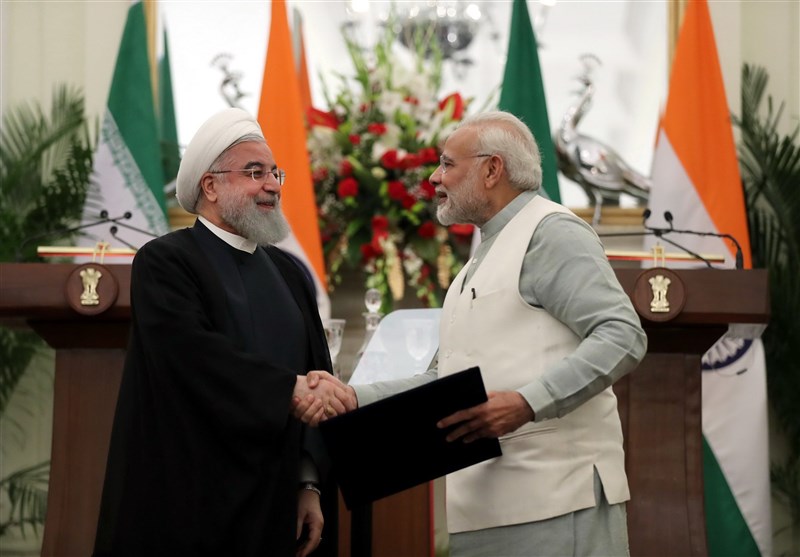India-Iran Relations and the Geopolitical Significance of Gwadar Port
The relationship between India and Iran holds significant geopolitical importance, influenced by centuries of cultural, economic, and strategic interdependence. In modern times, this relationship has been shaped by shared goals of regional stability, connectivity, and countering rival influences. Central to this partnership is the development of Chabahar Port in Iran and its strategic juxtaposition with Pakistan’s Gwadar Port, funded by China under the China-Pakistan Economic Corridor (CPEC). Both ports are critical for global trade routes, regional alliances, and the evolving military and economic strategies of the countries involved.
Historical Context of India-Iran Relations
India and Iran have shared a deep historical relationship, marked by cultural exchanges, trade, and political cooperation. The Persian influence on Indian architecture, language, and administration during the Mughal era remains a testament to their intertwined histories. Post-Indian independence, the relationship took a pragmatic turn, focusing on economic and strategic cooperation.
During the Cold War, Iran's alliance with the United States and India’s leadership in the Non-Aligned Movement limited the depth of their partnership. However, the 1990s marked a significant shift as both nations sought to counter regional instability and the rise of Taliban influence in Afghanistan. The convergence of their interests led to a focus on trade and infrastructure projects, most notably the development of Chabahar Port.
The Strategic Importance of Chabahar Port
Chabahar Port, located on Iran’s southeastern coast along the Gulf of Oman, is a gateway for India to access Afghanistan, Central Asia, and beyond. Unlike Pakistan’s Gwadar Port, Chabahar provides India a direct trade route, bypassing Pakistan—a critical factor given India-Pakistan tensions.
In 2016, India, Iran, and Afghanistan signed a trilateral agreement to establish a transport and transit corridor via Chabahar. India committed $85 million to develop two berths and pledged $500 million to the overall project. The port facilitates the shipment of goods from India to Afghanistan, circumventing Pakistan’s restrictions. It is also part of India’s broader strategy to connect to Central Asia, leveraging its relationship with countries like Uzbekistan and Turkmenistan.
Chabahar’s proximity to the Strait of Hormuz enhances its strategic importance. The Strait is a vital maritime chokepoint, with a third of the world’s liquefied natural gas and nearly 20% of total global oil consumption passing through it. By establishing a presence in Chabahar, India gains strategic leverage in one of the most critical regions for energy security.
Gwadar Port: China’s Geopolitical Play
Gwadar Port, approximately 72 km from Chabahar, is a centerpiece of China’s Belt and Road Initiative (BRI). Developed under the CPEC, it is strategically located near the Arabian Sea and provides China direct access to the Indian Ocean. This access is crucial for China’s energy imports from the Middle East, reducing reliance on the vulnerable Strait of Malacca.
For Pakistan, Gwadar is an economic and strategic asset. It serves as a linchpin for Pakistan-China relations, offering economic opportunities and strengthening military ties. However, Gwadar’s development also raises concerns about Chinese militarization in the Indian Ocean, posing challenges for India’s maritime security.
Military and Strategic Implications
Both Chabahar and Gwadar have profound military and strategic implications for India, Iran, Pakistan, and China.
For India, Chabahar enhances its maritime and military presence in the Arabian Sea. The port provides a platform for intelligence-gathering and monitoring activities at Gwadar, countering China’s increasing influence. It also bolsters India’s defense capabilities in the region, complementing its naval bases in the Andaman and Nicobar Islands.
Iran benefits strategically from Chabahar by attracting international investment and breaking out of economic isolation. The port reduces Tehran’s dependence on the Strait of Hormuz and enhances its regional standing as a trade hub. Moreover, its partnership with India offers a counterbalance to China’s growing influence in the Middle East and South Asia.
Pakistan’s military and economic dependence on China is reinforced through Gwadar. The port serves as a logistical and potentially military outpost for China in the Indian Ocean, challenging India’s regional dominance. For China, Gwadar represents a critical step in its “String of Pearls” strategy, aimed at encircling India with strategic ports.
Current Challenges
Despite its strategic importance, the development of Chabahar Port faces several hurdles. U.S. sanctions on Iran have deterred investment and slowed progress. Although India secured waivers to continue its involvement in Chabahar, the unpredictability of international policies toward Iran creates uncertainty. Additionally, regional instability, including security threats from terrorist organizations in Baluchistan, poses significant risks.
Gwadar, too, is not without challenges. The port has faced local resistance in Balochistan, where insurgent groups oppose Chinese investments. Security concerns have led to heightened military presence, further complicating its operational environment.
Future Prospects
The future of India-Iran relations and their port-centric strategy will depend on several factors. A potential thaw in U.S.-Iran relations could accelerate the development of Chabahar, boosting trade and connectivity. Enhanced regional cooperation, including involvement from Central Asian countries, could further integrate Chabahar into the global supply chain.
Conversely, Gwadar’s development is expected to continue under China’s strategic vision. However, its success will hinge on addressing local grievances and ensuring the security of investments. The increasing competition between Chabahar and Gwadar underscores the broader geopolitical rivalry between India and China in South Asia and the Indian Ocean.
Conclusion
The India-Iran partnership, exemplified by Chabahar Port, is a critical component of South Asia’s geopolitical landscape. It not only enhances regional connectivity but also provides India with strategic leverage against Pakistan and China. Meanwhile, Gwadar Port symbolizes the deepening ties between China and Pakistan, posing challenges for India’s strategic interests.
As the competition between these ports intensifies, their development will shape the future of regional geopolitics, influencing trade routes, energy security, and military strategies. For India, maintaining and strengthening its relationship with Iran will be essential to navigating this complex geopolitical terrain and asserting its influence in the region.


Comments
Post a Comment